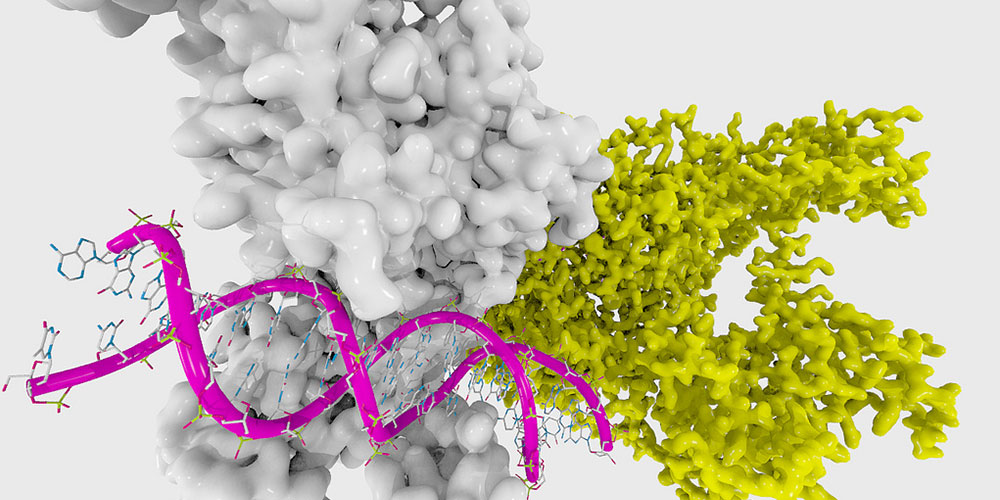Our work
Genetic Switches
In recent years huge strides have been made in international research following the completion of the Human Genome Project, which mapped DNA. A small amount of DNA is turned into single stranded RNA, which then turns into proteins thought responsible for the structures and functions we are familiar with (brown hair, blue eyes etc). The vast majority of DNA was believed to be ‘junk’ as it does not code for protein. However, it has been discovered that much of DNA is in fact transcribed into non-coding RNAs, some of which play important roles in normal biological function, gene regulation and cancer development.
Action Against Cancer has funded a number of projects related to non-coding RNAs led by Professor Stebbing. These projects have now been brought together into one programme called Genetic Switches. Our research is exploring multiple levels of gene regulation in different cancers to identify non-coding RNAs that are operating as genetic switches causing cancer to grow or regress. Below are two examples of current projects.
DICER
Dicer is one of the main enzymes regulating the formation of small molecules in cells called microRNAs. An altered expression of Dicer can enhance or restrain tumour initiation and progression. Up-regulation of Dicer has been seen in colorectal cancer and correlates with poor overall-survival. Conversely, down-regulation of Dicer has been associated with melanoma and breast cancer progression and poor overall survival.
The role of Dicer in various cancers is being investigated in a number of projects currently being funded by Action Against Cancer. These include examinations of pancreatic and triple negative breast cancer, which are particularly difficult to treat.
P53
Described as 'the guardian of the genome', the protein 'p53' has a crucial role in controlling the growth of cells and preventing the growth and spread of abnormal or cancerous cells by causing them to die. It is widely believed that the development of abnormal p53, or loss of its production, is the single most important step in the process of a normal cell becoming cancerous. Despite p53's importance and the fact that it was first discovered as long ago as 1979, no one has 'cracked' how to target it therapeutically.
Action Against Cancer is funding a groundbreaking programme designed to achieve this goal. Because p53 is the most commonly mutated gene in so many cancers, targeting it is likely to have applicability in most tumour types.
Project Spotlights:
Improving Platinum Therapy for Ovarian Cancer Patients

